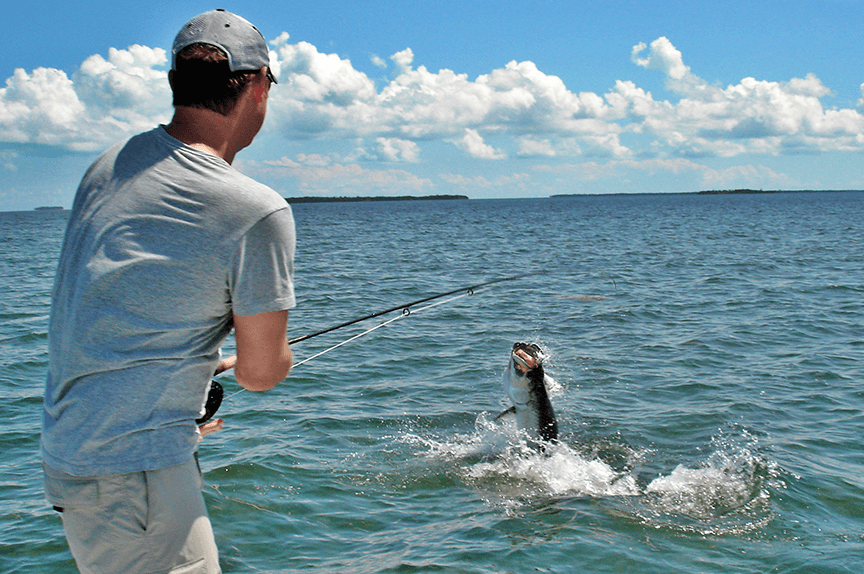I’d been on a bad run for at least six months, or probably more like a year.
A fish-drought. I couldn’t catch a fish if my rent depended on it.
At best an occasional bluegill or little stocked rainbow trout. As for the saltwater, whenever I could get there, mostly what I found was little snappers and random small fish that I couldn’t identify and can’t name. It was depressing. I bet this kind of drought happens to everyone but Trey Combs, but still. So one early-spring day in my desperate snow-bound Brooklyn I got a phone call.
A casting instructor, friend, and all-around fishing mentor, called to say that one of the best guides in the Florida Keys had a sudden opening out at Big Pine Key for some prime tarpon fishing. I couldn’t imagine paying for a trip to Big Pine Key! I couldn’t possibly afford it!
A few weeks later, I arrived in Big Pine.
The night before our first day on the water, I talked to my guide on the phone. He said some things that, if you’re a fisherman with any seasons, you immediately recognize as ridiculous: “conditions are shaping up to be perfect;” “the tarpon are in thick;” “I don’t know if I’ve ever seen better conditions.”
Right, right.
So in the morning we went out. Within 10 minutes we were over dozens of huge fish, animals that looked like gray railroad ties with fins. An impossible number.
It was like a second meniscus of 100-pound fish cruising just under the surface. I don’t think we even saw a fish under 90 pounds but lots of them were around 120 pounds easily.
This was my first tarpon trip. There were more tarpon than I ever even hope to see in one place again. Sure enough, I’ve been after tarpon since this trip and have felt lucky to see one or two fish a day so this trip was special. I spent just about every moment of the four days casting over these five-foot-long fish. It was unnerving, and hugely exciting. These fish were a bit tricky. Some wanted a palolo worm imitation while some wanted a chartreuse toad or whatever. There didn’t seem to be any rhyme or reason for what individual fish wanted to eat; fly selection was based on my guide’s intuition and trial-and-error.
But no matter what and you’ve heard this before, presentation was key. Put the fly in front of the fish and swim it at an angle away from them. This was what worked. Swim the fly across the fish and the odds plummet. Retrieve it toward them and forget it, they’re violently gone.
We got tons of takes. A tarpon’s take is often surprisingly subtle – the massive fish just comes up behind the fly and then the fly is gone. Nothing savage about it, in most cases, just beautiful efficiency.
But the next few seconds are not subtle. When you strike the fish, it responds with outrageous, unbelievable power. The water in the fish’s general area seems as if it’s being strafed with a barrage of artillery. Huge explosions of water where the fish is, big holes where the fish just was, all this in clear, shallow water. It’s incomprehensible until you’ve done it.
Over my four days of fishing, I hooked & jumped probably three dozen fish. I brought maybe six of those to the boat. Hooks fell out, rods broke, leaders broke, sharks
threatened, the usual stuff. It was exhilarating, the fly fishing equivalent of skydiving in my opinion.
Every plane ride home from a trip I sit back and plan the next one.
I can’t wait to do it again.
Tarpon: Big Pine Key
by John Melfi (originally published in Tail #2, November 2012)


 SUBSCRIBE TO TAIL
SUBSCRIBE TO TAIL
Great article!